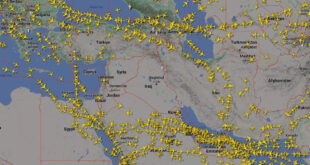[ad_1]

The UN Tourism, formerly UNWTO has unveiled its latest Tourism Visa Openness report, showcasing a resurgence in international travel accessibility to pre-pandemic standards. The study delves into the dynamic realm of global visa regulations, highlighting significant shifts in travel facilitation strategies.
Tourism Visa Openness Index is a metric designed to gauge the extent to which destinations promote tourism and the degree of visa facilitation they offer. It also evaluates mobility scores, reflecting the impact of visa policies on citizens worldwide, alongside an intricate analysis of visa policy reciprocity.
Key findings of the Tourism Visa Openness report revealed that international travel openness has returned to pre-pandemic levels after the relaxation of Covid-19 travel restrictions. The pandemic has led to the emergence of innovative travel facilitation measures, including “nomadic visas.”
Moreover, the proportion of individuals requiring traditional visas has decreased globally, from 77 per cent in 2008 to 47 per cent in 2023. In addition, an increasing number of people are enjoying visa-free travel, marking an increase from 17 per cent in 2008 to 21 per cent of the global population. Furthermore, approximately 14 per cent of the world population can avail themselves of visa on arrival facilities, a significant rise from 6 per cent in 2008. Finally, around 18 per cent of the world population can apply for eVisas, witnessing a substantial increase from 3 per cent in 2013.
The UN Tourism report also provided a comprehensive analysis of visa regulations worldwide, based on different regions. The highest openness score was recorded in Asia and the Pacific, while South East Asia, East Africa, and the Caribbean emerged as the most open sub-regions.
South Asia and West Africa witnessed a significant increase in openness since the last report. On the other hand, Central and North Africa, North America, and Northern and Western Europe were found to be the most restrictive regions. The prevalence of visa exemptions was particularly notable in the Caribbean and Central America. East Africa, South Asia, South East Asia, and West Africa were found to have common visa on arrival policies. The Tourism Visa Openness report further emphasises the pivotal role of visa policy enhancements in fostering tourism growth. Key suggestions include integrating tourism perspectives into visa strategies, introducing targeted visa-exemption programs for low-risk traveller markets, and expanding visa on arrival facilities.
Additionally, clear communication on visa policies, streamlined application processes, expedited processing times, and optimized entry procedures are crucial for enhancing the overall visitor experience.
Source link





